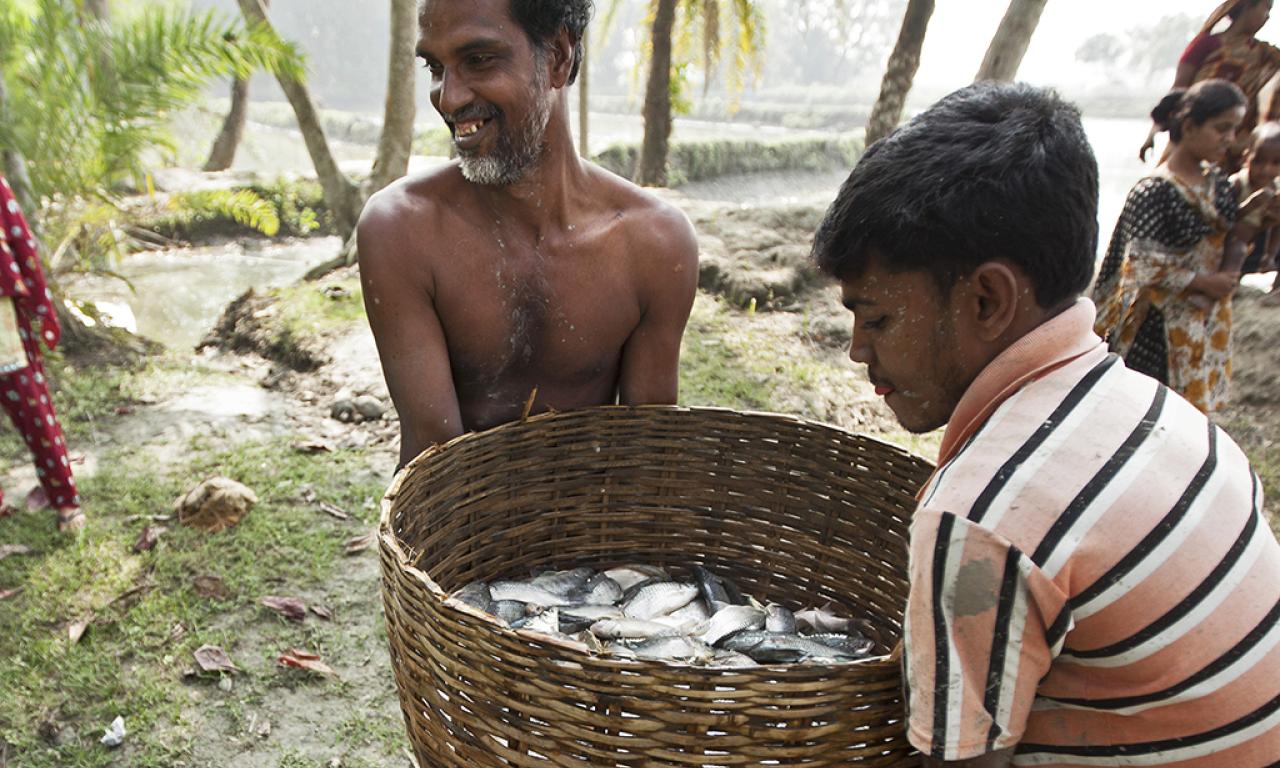
The salmon industry's decision to collectively pursue Aquaculture Stewardship Council certification is an important step, but it's upgrading small-scale farming where the big pay-offs lie.
The salmon industry's decision to collectively pursue Aquaculture Stewardship Council certification is an important step, but it's upgrading small-scale farming where the big pay-offs lie.
Sabina Yasmin lives in a small village in the Jessore district of Bangladesh. Like millions of others in the country she is benefitting from the spectacular growth in pond aquaculture that is taking place there.
Recommended publications
- The impacts of aquaculture development on food security: lessons from Bangladesh
- Blue frontiers: managing the environmental costs of aquaculture
I was lucky enough to visit Sabina recently, and listening to her I was struck by how similar her situation is to the salmon farmers in my native Scotland. The farm was completely different, to say nothing of the income level, but one thing was exactly the same: the importance of being be more efficient.
Looking for efficiencies is something all enterprises do, but some are better equipped to pursue improvements - salmon farmers are among them, Sabina and her friends aren't.
That's partly to do with the experience of the farmers, but it's also because there is a big difference between achieving efficiencies for a relatively small number of large operators that grow salmon and the millions of small farmers growing tilapia or carps. With only a small number of large companies who are driven by international competition, the levels of advice and support to improve and standardize management practices are much higher.
This support and advice leads to improved productivity and profitability. And, just as important, it also has environmental benefits through more efficient use of environmental goods and services - something that becomes apparent if we compare the cross country differences in demands on environmental services.
Consider salmon and tilapia as examples. For six categories of environmental impact (eutrophication, CO2 emissions, acidification, land use, biotic depletion and energy use), the difference between the poorest and best performing of the main salmon producing countries (Norway, UK, Canada, and Chile) is estimated to be between 3 and 124%. It is a stark contrast to the four dominant intensive tilapia producing countries China, Indonesia, Philippines, and Thailand, each of them with many thousands of fish farmers, for whom differences for the same five impact categories are between 24 and 635% [2].
For governments and development agencies concerned with the environmental impacts of the aquaculture sector, this is an important result. Important as further improvements in the salmon industry are, salmon accounts for only about 4% of world aquaculture fish production; tilapia and major carps, account for more than 40%. [2].
Because this dominance by small-holders and Small and Medium Enterprises in developing countries is set to continue for the next 10 - 20 years, focusing on improving efficiencies here will have much greater environmental payoff than any incremental improvements the salmon industry can make. It will also drive much needed economic development in rural Bangladesh and other parts of the world that need it most.
Let's be clear, the salmon industry like any other must continually strive to improve it's environmental performance, and the companies who have signed the recent compact to gain ASC certification are to be applauded [3]. In the grand scheme of things though it is in supporting the small farmers like Sabina Yasmin to improve their productivity and environmental sustainability that the biggest dividends lie. But we cannot expect those small-holders to achieve those improvements by themselves; that will require large scale concerted investment by international aid agencies in partnership with governments.
[1] Hall, SJ Delaporte, A Phillips, MJ Beveridge, M, O’Keefe, M (2011) Blue Frontiers: Managing the Environmental Costs of Aquaculture., The WorldFish Center, Penang, Malaysia.
[2] FAO (2012) The state of world fisheries and aquaculture 2012, FAO, Rome
[3] Clay, J. (2013) Spawning a sustainable industry for farm-raised salmon. The Guardian Newspaper. 14th August.